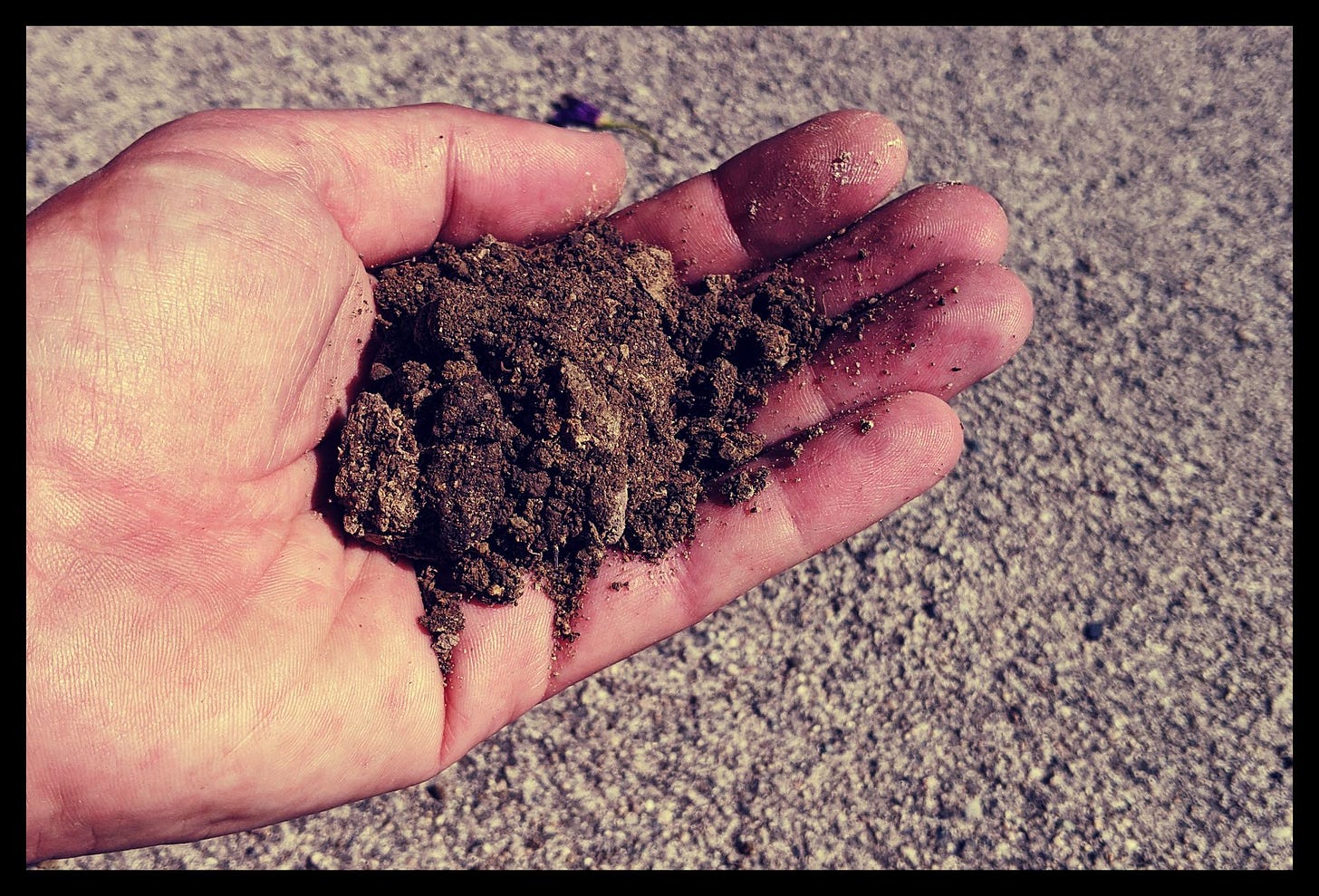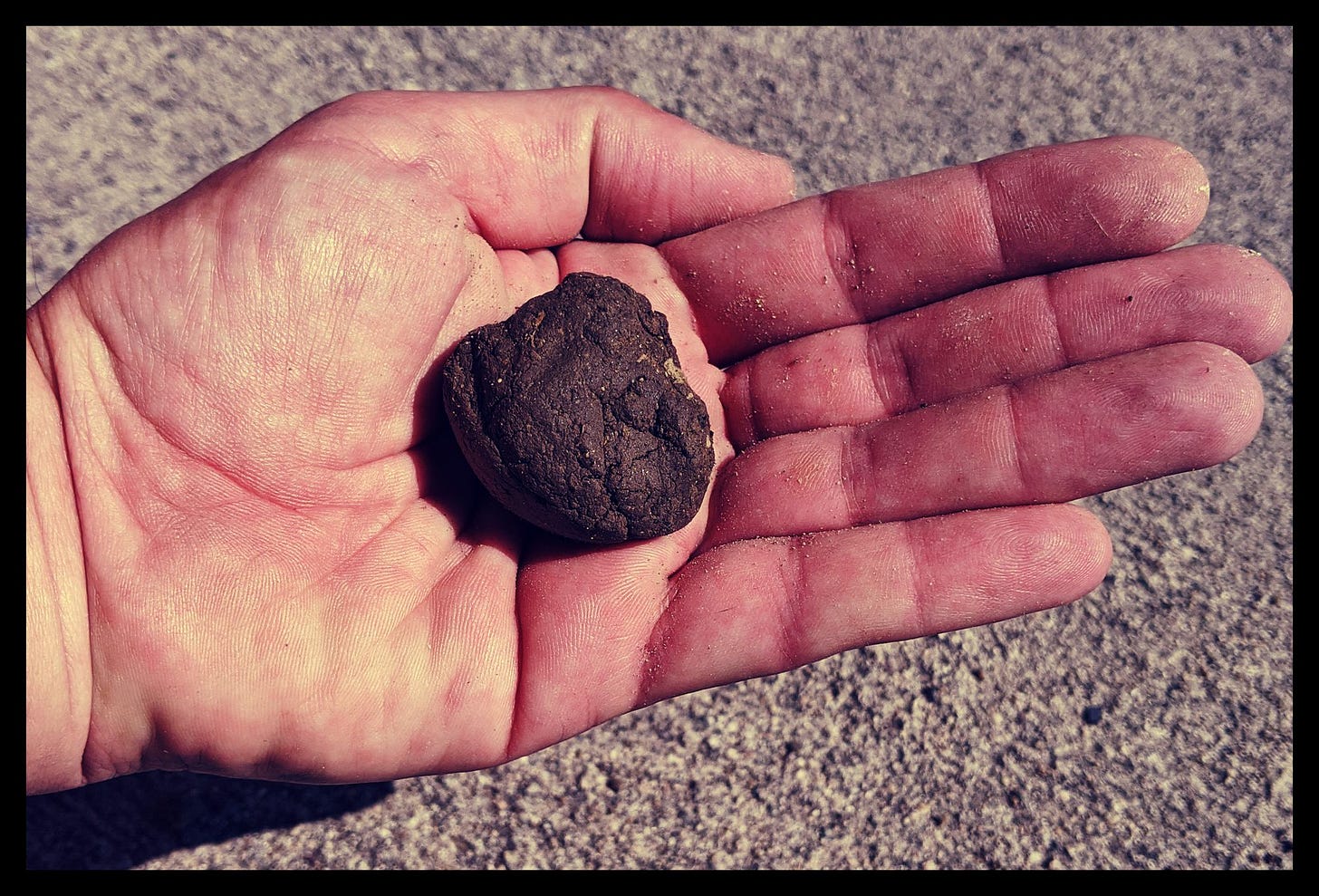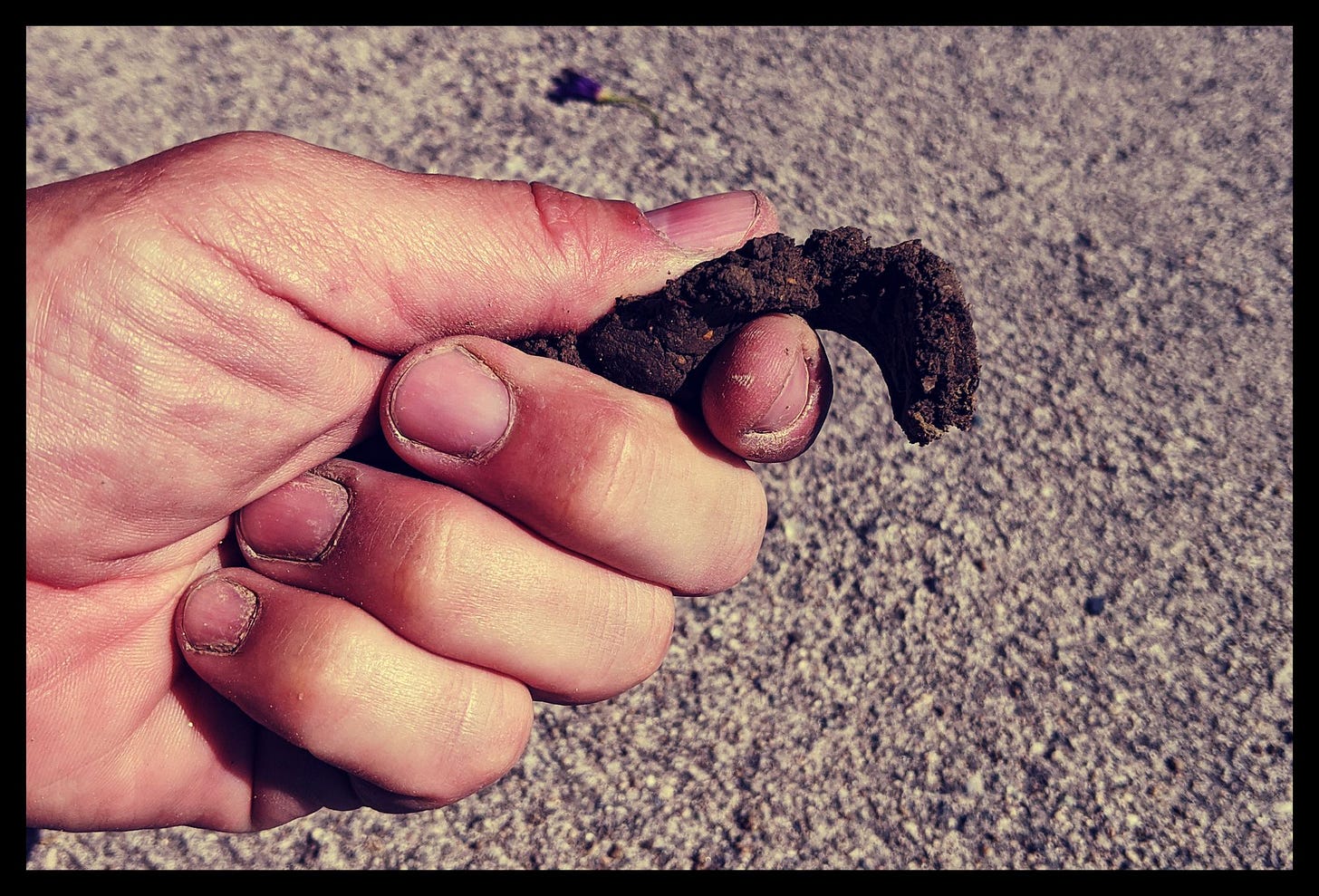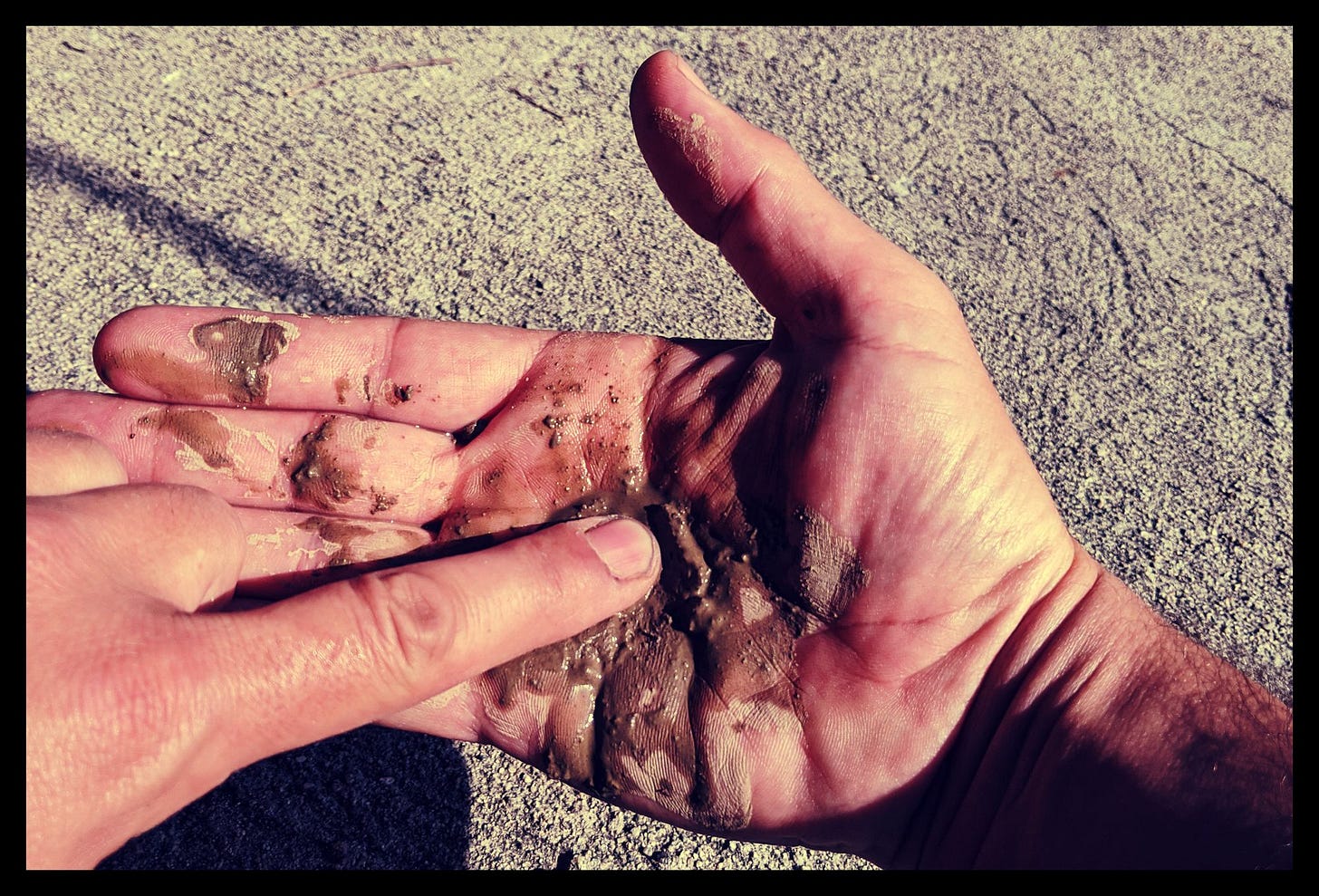Test your Soil Texture by Hand
Using this simple technique you can easily understand what type of soil you have.
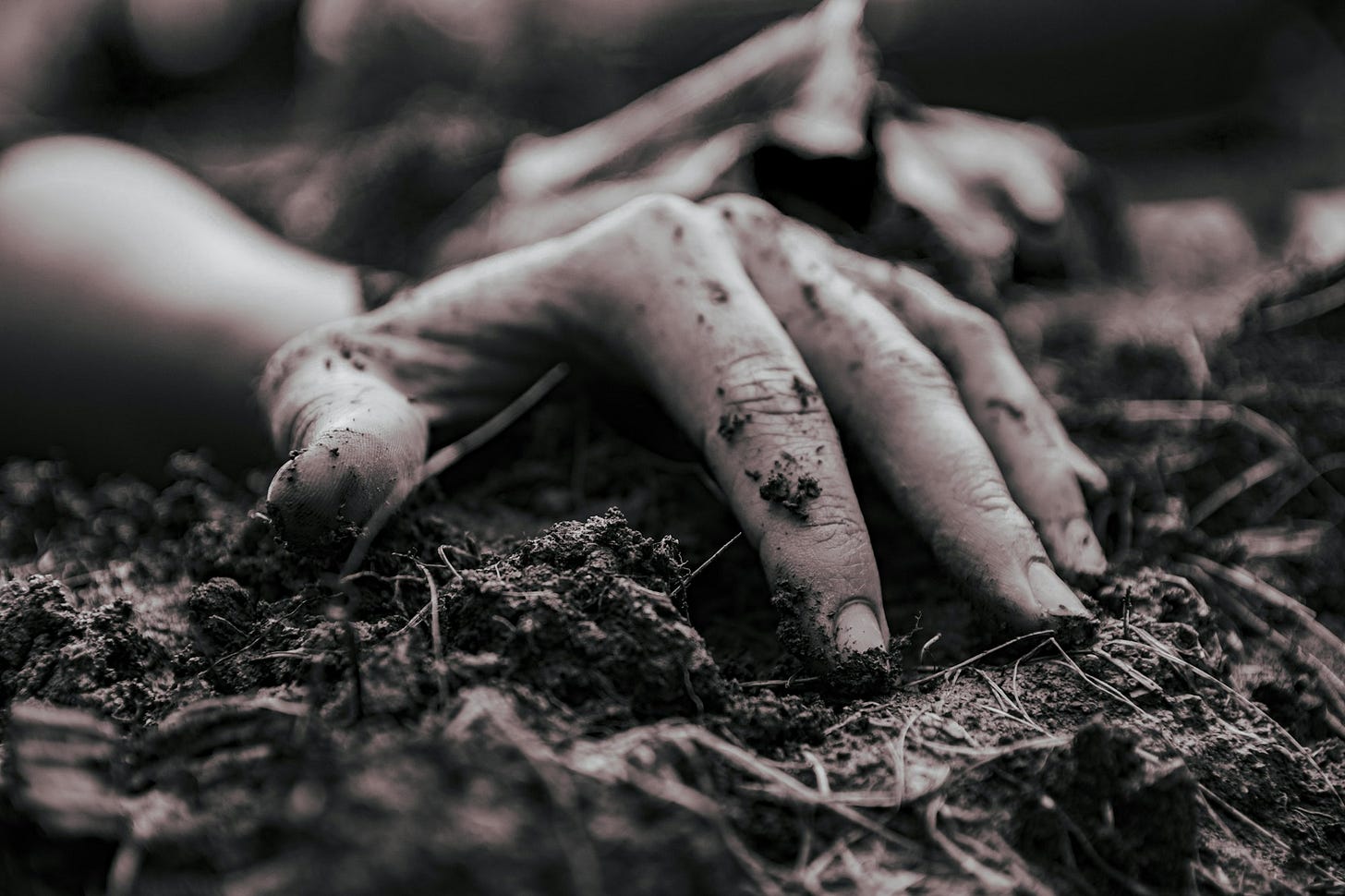
Knowing what type of soil texture you have is very important when working on a planting design for a garden.
Put simply there are 4 categories of soil: Sandy, Silt, Clay or Loam.
Sandy soil is made up of large particles and water drains through it very fast.
Silt contains medium sized particles and is well draining but not as fast as sand.
Clay soil contains the smallest particles and is not fast draining.
Loam is not defined by particle size, instead it is where there are equal amounts of silt and sand but slightly less clay particles in the soil. Loam is considered the ideal type of soil for gardening.
In today's post, I will explain a simple method for determining soil texture by hand. This method of testing soil texture is known as the Roll Method or the Testing By Feel Method. This is the quickest way to determine soil type when out in the field.
Steps to Test Soil Texture by Hand:
1 - Take a handful of soil from the area you want to test. Place the soil in the palm of your hand and remove any pieces of root or pebbles from the soil and knead the dry soil to crush any particles of compacted soil.
2 - Add some water and roll the soil in your hand into a ball. Make sure the ball is consistently wet by breaking it down and rolling into a ball several times. If you cannot roll the soil into a ball no matter how wet or dry, then you have sandy soil.
3 - Place the ball of soil between your thumb and forefinger and squeeze it into a ribbon over your finger. If a ribbon cannot be formed then you have Loamy Sand. If the soil does form a ribbon you just keep pushing the soil out until the ribbon breaks from its own weight. Make a note of the length.
4 - If you formed ribbons, put a smaller piece of the same soil into your palm and excessively wet it and feel the consistency with your finger. What you are looking for is whether the soil feels gritty, smooth (like wet flour) or sticky.
If you reached step 4, your soil may be loamy or clay. As a general rule of thumb, the longer you can roll out the ribbons without breaking, the more clay content in your soil. Combining the results from steps 3 and 4 breaks it down further to more specific soil types:
So What Does this Mean?
Now that you know what type of soil you have in your garden bed, you can be better informed when selecting plants.
Some plants prefer well-draining soil (sandy/silty) and planting them in clay soil can cause roots to rot from the excessive moisture retained in the soil. While most plants that are happy in clay will not mind being in well draining soil, you will need to water them more often because well-draining soil cannot retain moisture as well as clay soil.
If you have plain Loam soil, this is considered to be the best type of soil for gardening and this is the type of soil you find in potting or garden soil sold at garden centres.
Some plants can have very specific soil requirements, knowing exactly the type of soil you have can be very helpful if you are having problems troubleshooting issues with your plant's growth when using one of the many online discussion sites and apps for home gardeners.




